Bathtub
How to Clean a Jacuzzi Bathtub
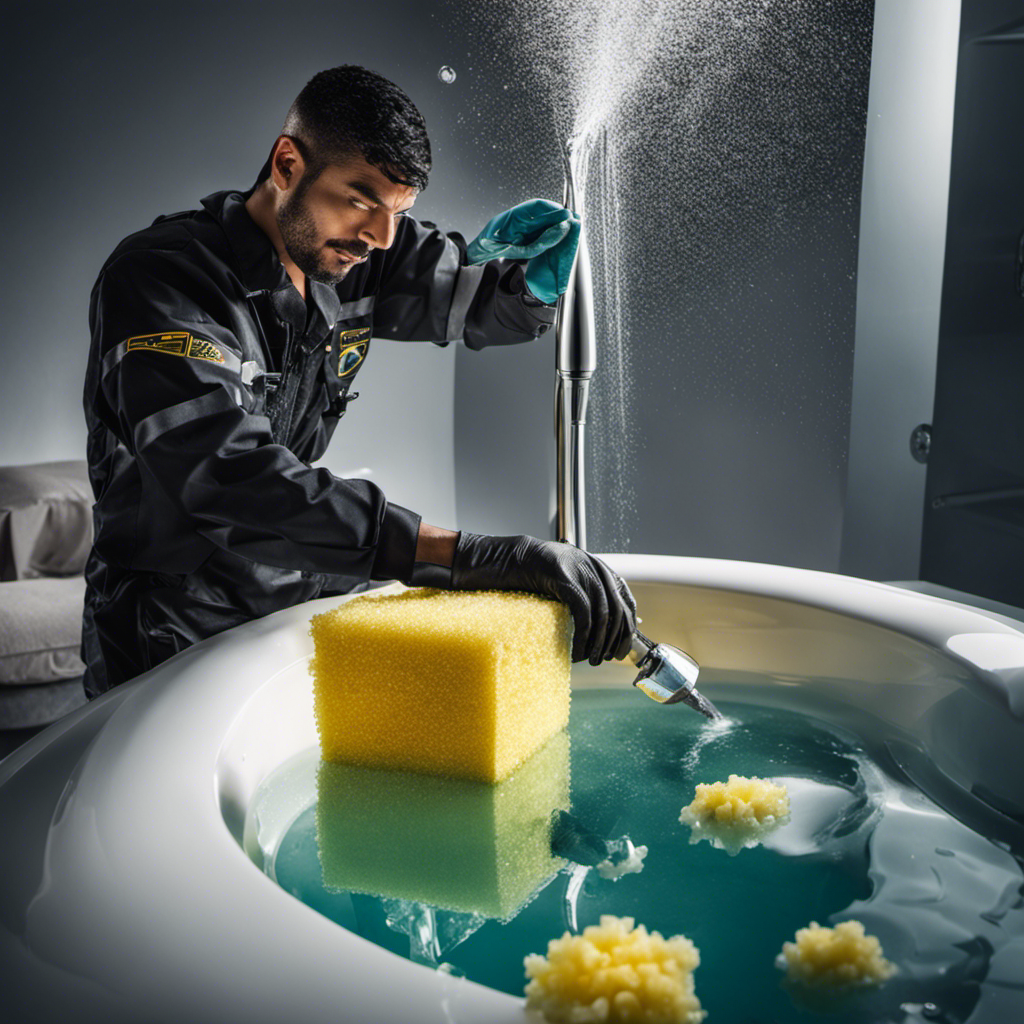
Are you ready to dive into the ultimate relaxation experience?
Well, before you can fully enjoy the soothing jets and warm water of your Jacuzzi bathtub, it’s important to keep it clean and well-maintained.
In this article, we will guide you through the step-by-step process of cleaning your Jacuzzi bathtub, ensuring it stays sparkling and germ-free.
So, grab your cleaning supplies and let’s get started on transforming your tub into a haven of tranquility.
Key Takeaways
- Regular maintenance is crucial for the longevity of a Jacuzzi bathtub.
- Gathering the necessary cleaning supplies is important for effectively cleaning the tub.
- Draining and cleaning the bathtub jets is necessary to ensure they function properly.
- Removing and cleaning the filter is important for keeping the water clean and debris-free.
Understanding the Components of a Jacuzzi Bathtub
Understanding the components of a Jacuzzi bathtub can help you properly clean and maintain it. By familiarizing yourself with the mechanics of the tub, you can ensure that all parts are functioning optimally and address any issues that may arise.
A Jacuzzi bathtub typically consists of a pump, jets, filters, and a control panel. The pump is responsible for circulating the water, while the jets provide the soothing massaging effect. Filters help to keep the water clean by trapping dirt and debris.
Regular maintenance is crucial to ensure the longevity of your Jacuzzi bathtub. This includes cleaning the filters regularly, checking and maintaining the pump, and keeping the control panel in good condition.
Gathering the Necessary Cleaning Supplies
First, gather all the supplies you’ll need to give your jacuzzi bathtub a thorough cleaning. Here’s a list of essential cleaning products and tools to get started:
- Hot tub cleaner: Look for a specialized cleaner designed for jacuzzi bathtubs. This will effectively remove any build-up and grime.
- Non-abrasive sponge or cloth: Choose a soft sponge or cloth that won’t scratch the surface of your tub.
- Cleaning brush: A small brush with soft bristles will help you reach tight corners and crevices.
- White vinegar: This natural cleaning agent is great for dissolving mineral deposits and sanitizing your tub.
- Rubber gloves: Protect your hands from harsh chemicals and hot water with a pair of rubber gloves.
Draining and Cleaning the Bathtub Jets
To drain and clean the jets, you’ll want to start by turning off the power to the tub. This step is crucial for your safety.
Once the power is off, locate the drain plug and remove it to let the water flow out.
Next, fill a bucket with warm water and add a cleaning solution specifically designed for jet maintenance. Make sure to read the instructions on the cleaning solution for the correct dilution ratio.
Once the solution is ready, pour it into the tub and turn on the jets for 10-15 minutes. This will allow the cleaning solution to circulate through the jets and remove any buildup or residue.
After the designated time, drain the tub completely and wipe down the jets with a clean cloth to remove any remaining residue.
Repeat this process every 1-2 months to keep your jets clean and functioning properly.
Removing and Cleaning the Filter
To ensure the optimal performance of your filter, it’s important to follow these filter maintenance tips.
Regularly inspect your filter for any debris or clogs, and clean it as needed.
Proper filter cleaning involves removing the filter, rinsing it with water, and using a filter cleaner or a mild detergent to remove any stubborn residue.
Filter Maintenance Tips
When cleaning your jacuzzi bathtub, don’t forget to regularly clean and maintain the filters. Proper filter maintenance is crucial to ensure optimal performance and longevity of your jacuzzi.
Here are some important tips to keep in mind:
- Schedule regular filter replacement: Filters should be replaced every 3 to 6 months, depending on usage and water quality.
- Check for common filter issues: Look out for signs of clogging, such as reduced water flow or cloudy water. These issues can be resolved by cleaning or replacing the filter.
- Clean the filter housing: Remove the filter and clean the housing with a mild detergent to remove any debris or buildup.
- Rinse the filter: Use a hose to thoroughly rinse the filter, removing any dirt or debris trapped in the pleats.
- Allow the filter to dry: Make sure the filter is completely dry before reinstalling to prevent mold or mildew growth.
By following these maintenance tips, you can ensure that your jacuzzi bathtub’s filters are in optimal condition and provide you with a clean and enjoyable bathing experience.
Now, let’s move on to the next section about proper filter cleaning techniques.
Proper Filter Cleaning
Regularly cleaning and maintaining the filters is crucial for optimal performance and longevity of your jacuzzi bathtub. The filters play a vital role in keeping your water clean and free from debris. Over time, filters can become clogged and less effective, leading to poor water circulation and potential damage to your jacuzzi system. To ensure your filters are working properly, it’s important to clean and replace them as needed. Here are some common filter problems you may encounter and how to address them:
| Common Filter Problems | Solutions |
|---|---|
| Clogged filters | Remove the filters and rinse them with water to remove any debris. If the filters are severely clogged, it may be necessary to soak them in a filter cleaner solution. |
| Worn-out filters | Replace the filters with new ones to maintain optimal performance. Regular filter replacement is recommended every 3-6 months. |
| Damaged filters | If the filters are damaged, such as torn or dented, they should be replaced immediately to prevent further damage to the jacuzzi system. |
Scrubbing and Disinfecting the Bathtub Surface
After draining the water, start by scrubbing the bathtub surface with a mixture of baking soda and vinegar. This powerful combination helps to remove stubborn stains and disinfect the tub.
Here’s a step-by-step guide to effectively clean your Jacuzzi bathtub:
- Sprinkle baking soda generously on the surface of the tub.
- Pour vinegar over the baking soda, creating a fizzing reaction.
- Use a soft sponge or cloth to scrub the mixture onto the surface, focusing on areas with stains or grime.
- Rinse the bathtub thoroughly with warm water to remove any residue.
- For extra shine, wipe the tub dry with a clean towel.
By following these steps, you can ensure that your Jacuzzi bathtub is not only clean but also free from any stubborn stains.
Remember to regularly clean your tub to maintain its pristine condition.
Proper Maintenance and Preventive Tips
To keep your tub in great condition, you should regularly check for any signs of damage or wear. Preventive maintenance is key to ensuring the longevity of your Jacuzzi bathtub.
Start by inspecting the jets and filters for any clogs or blockages. Clean them using a soft brush and a mixture of warm water and mild detergent. Don’t forget to rinse thoroughly.
Additionally, check the seals and caulk around the tub. If you notice any cracks or gaps, repair or replace them promptly to prevent water leakage.
For regular cleaning, use non-abrasive cleaners and a soft cloth or sponge. Avoid harsh chemicals that can damage the surface.
Lastly, make sure to dry the tub thoroughly after each use to prevent mold and mildew growth.
Frequently Asked Questions
How Often Should I Clean My Jacuzzi Bathtub?
You should clean your Jacuzzi bathtub regularly to maintain its cleanliness and functionality. Neglecting to clean it can lead to buildup and potential damage. Avoid common mistakes when cleaning, such as using harsh chemicals or abrasive scrubbers.
Can I Use Regular Household Cleaners to Clean My Jacuzzi Bathtub?
You’ll want to avoid using regular household cleaners on your Jacuzzi bathtub. Instead, opt for the best cleaning products specifically designed for Jacuzzi tubs. These products will ensure a thorough and safe cleaning experience.
How Do I Clean the Control Panel of My Jacuzzi Bathtub?
To clean the control panel of your Jacuzzi bathtub, start by turning off the power. Then, use a damp cloth with a mild cleaner to gently wipe the panel. Avoid getting water inside the panel. Regular cleaning is essential for proper maintenance.
Is It Necessary to Clean the Bathtub Jets if I Don’t Use Them Often?
If you don’t use the bathtub jets often, it may seem like you don’t need to clean them. However, it is still important to clean them regularly to prevent any buildup or clogs.
Can I Use Bleach to Disinfect My Jacuzzi Bathtub?
Using bleach to clean your Jacuzzi bathtub can be effective in disinfecting it. However, there are pros and cons to consider. Bleach can kill bacteria and remove stains, but it may also damage the tub’s surface and cause respiratory irritation.
Conclusion
In conclusion, now that you know how to clean a jacuzzi bathtub, you are armed with the power to transform your relaxation haven into a sparkling oasis.
By diligently following the steps outlined in this guide, you can ensure that your jacuzzi remains a pristine sanctuary for years to come.
Remember, a clean jacuzzi not only enhances your bathing experience but also promotes good hygiene and prevents the buildup of harmful bacteria.
So go ahead, unleash your inner cleaning guru and bask in the glory of your immaculate jacuzzi tub!
With an impeccable eye for detail and a passion for bathroom-related, Ava leads our editorial team gracefully and precisely.
Under her guidance, Best Modern Toilet has flourished as the go-to resource for modern bathroom enthusiasts. In her free time, you might find Ava exploring antique shops and looking for vintage bathroom fixtures to add to her collection.
Bathtub
Should I Close the Toilet Seat After Pooping
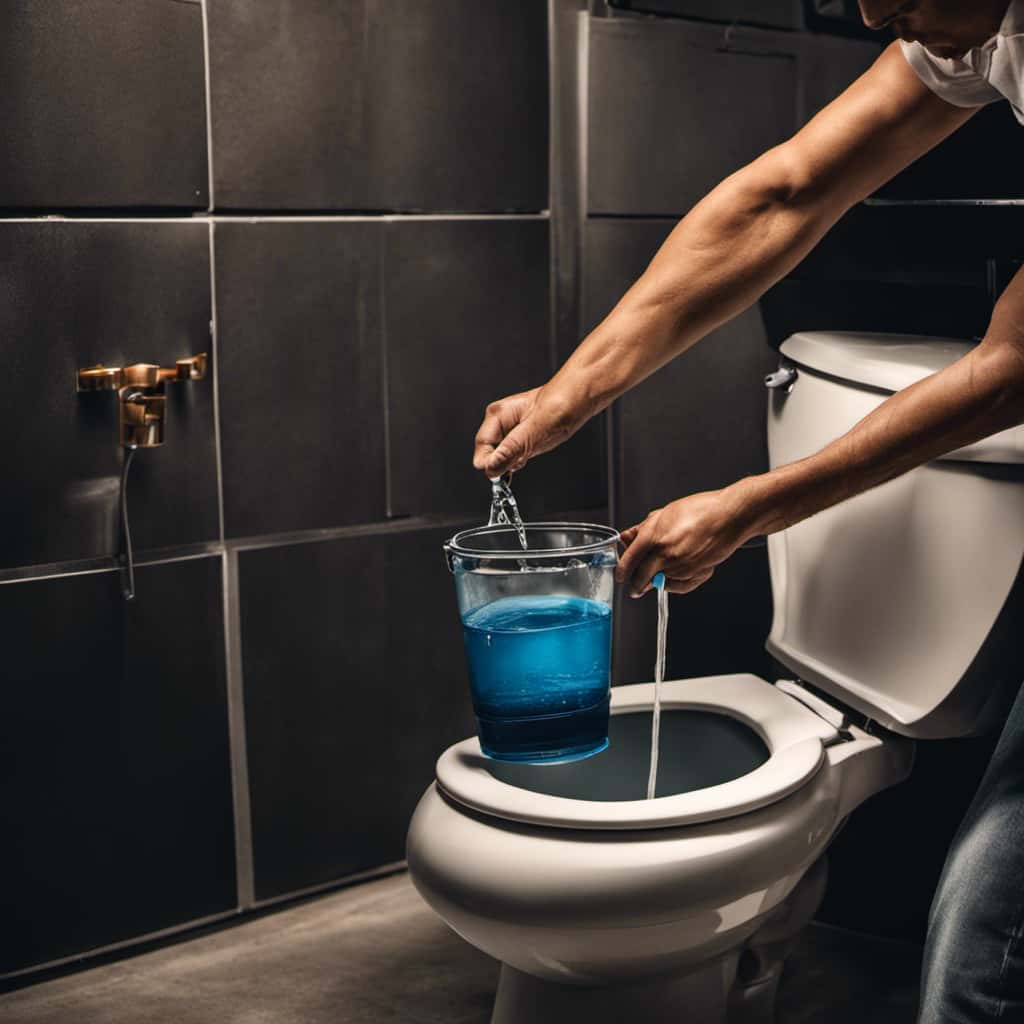
Similar to a ship’s crew discussing which way to navigate, we frequently contemplate the timeless query: should we shut the toilet seat after using it?
In this article, we explore the hygiene benefits, potential health risks, and courtesy arguments for closing the seat.
We also delve into the reasons why some opt to leave it open.
Join us as we navigate the murky waters of toilet seat etiquette and help you make an informed decision based on facts and considerations.
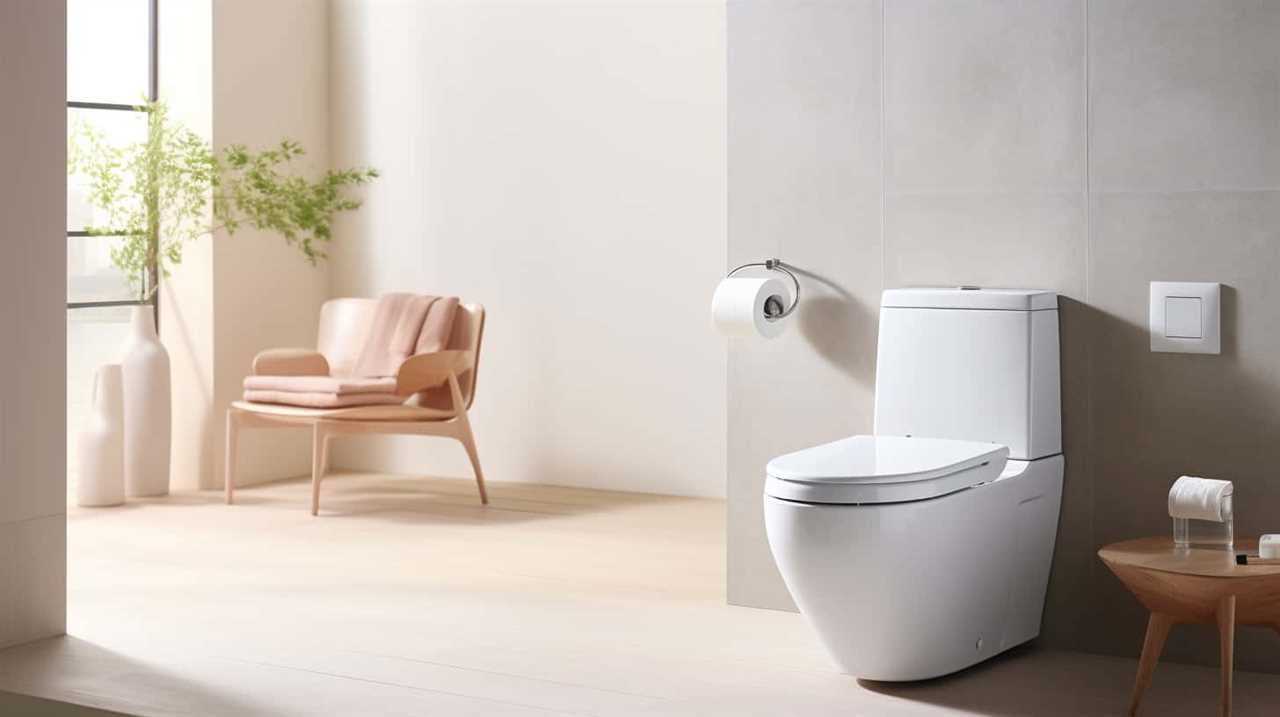
Key Takeaways
- Closing the toilet seat after pooping helps prevent the spread of germs and maintains cleanliness in the bathroom.
- Leaving the seat open increases the risk of spreading germs and bacteria throughout the bathroom, potentially causing illnesses.
- Closing the seat shows respect and consideration for others, preventing accidental contact with germs and reducing the risk of someone falling into the toilet bowl.
- When deciding whether to close the seat, it is important to consider personal preferences, household dynamics, and the importance of reaching a mutual agreement to maintain harmony in shared spaces.
Hygiene Benefits of Closing the Seat
Closing the toilet seat after using it can help prevent the spread of germs and maintain cleanliness in the bathroom. By closing the seat, you create a barrier that prevents bacteria and other microorganisms from escaping the toilet bowl and contaminating the surrounding area. This simple act of hygiene can significantly reduce the risk of illness and infection.
When the seat is left open, it allows for the dispersion of microscopic droplets that may contain harmful bacteria, increasing the chances of cross-contamination. Closing the toilet seat also prevents items from accidentally falling into the bowl, ensuring that the surface remains clean and free from potential sources of contamination.
Potential Health Risks of Leaving the Seat Open
Leaving the toilet seat open can increase the risk of spreading germs and bacteria throughout the bathroom. When the seat is left open, particles from flushing can be dispersed into the air, landing on various surfaces. These particles may contain harmful microorganisms that can cause illnesses such as diarrhea, urinary tract infections, and respiratory infections. To illustrate the potential health risks of leaving the seat open, consider the following table:
| Risks | Cleanliness |
|---|---|
| Spread of germs | Reduced hygiene |
| Increased infection | Decreased sanitation |
| Higher risk of illness | Poor bathroom hygiene |
The Courtesy Argument for Closing the Seat
After we finish using the toilet, it’s considerate to close the seat for the next person. This simple act shows respect and consideration for others who may need to use the bathroom after us. While some may argue that leaving the seat open isn’t a big deal, the courtesy argument for closing the seat holds its ground. Here are three reasons why closing the seat is the polite thing to do:
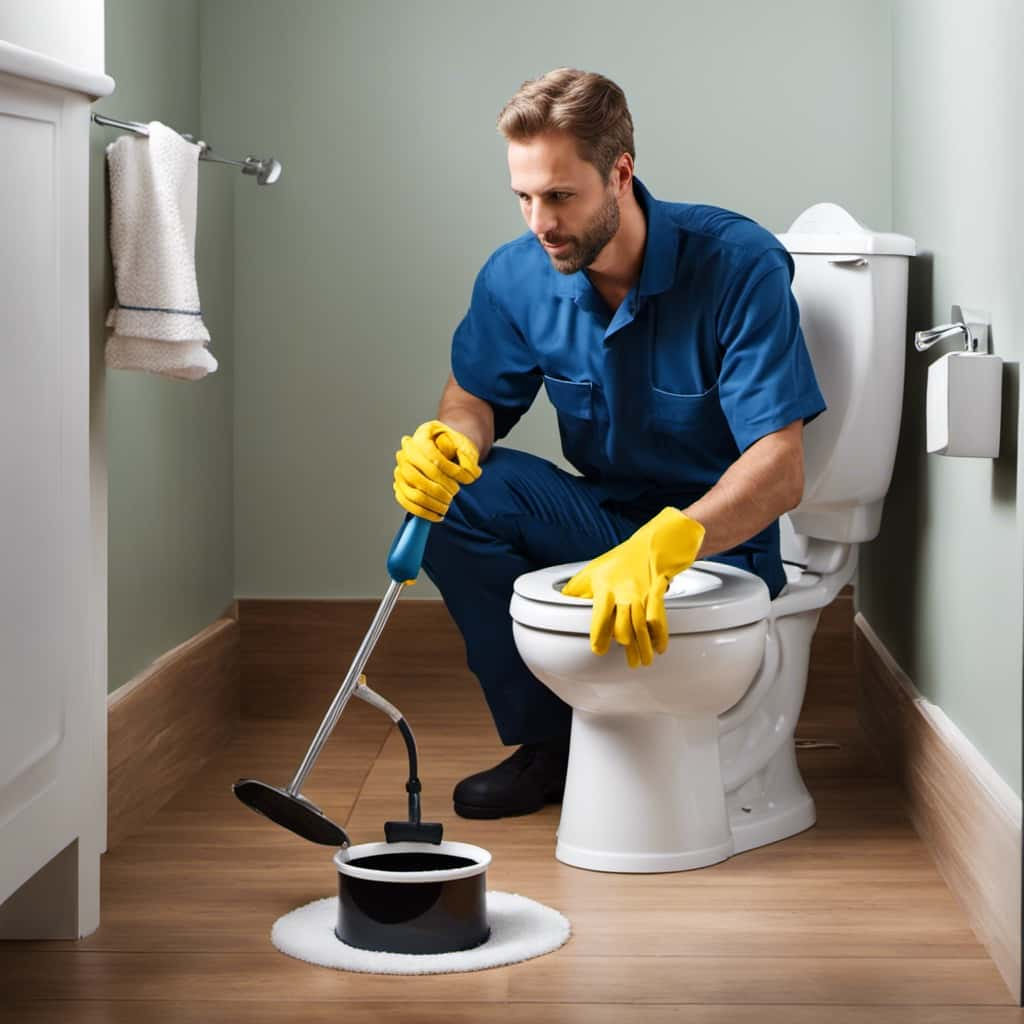
- Hygiene: Closing the seat prevents any accidental contact with germs or bacteria that may be present in the toilet bowl. It helps maintain a clean and sanitary environment for everyone.
- Safety: A closed seat reduces the risk of someone accidentally falling into the toilet bowl, especially in households with young children or elderly individuals.
- Cultural perspectives: Closing the seat is a common practice in many cultures, seen as a sign of cleanliness and respect. By adhering to this etiquette, we can show our understanding and consideration for diverse cultural norms.
Reasons Why Some People Choose to Leave the Seat Open
While it’s important to consider the courtesy argument for closing the seat, some people choose to leave it open for their own personal reasons. Toilet seat etiquette is a matter of individual preference, and there are several factors that might influence this choice.
Some individuals may have physical limitations or disabilities that make it difficult to close the seat after use. Others may find it more convenient to leave the seat open, especially in households where multiple people use the bathroom. Additionally, some individuals may have cultural or personal beliefs that affect their decision to leave the seat open.
Ultimately, each person’s choice regarding the toilet seat should be respected, as long as they’re mindful of the preferences and needs of others who share the same space.
Considerations for Making Your Own Decision
When making our own decision about whether to close the toilet seat after pooping, there are several factors to consider. Here are three key considerations to keep in mind:

- Toilet Seat Etiquette: Proper toilet seat etiquette is an important aspect to consider. Closing the toilet seat after using it shows respect for others who might use the bathroom next, ensuring a clean and tidy environment for everyone.
- Personal Preferences: Your own personal preferences should also play a role in making this decision. Some people prefer to close the toilet seat for hygienic reasons or to prevent pets from drinking out of the bowl, while others may leave it open for convenience or personal habits.
- Household Dynamics: The dynamics of your household can also influence your decision. If you live alone, you have the freedom to choose what works best for you. However, if you live with others, it’s important to consider their preferences and reach a mutual agreement to maintain harmony.
Frequently Asked Questions
Are There Any Specific Bacteria or Germs That Can Be Easily Transmitted From Leaving the Toilet Seat Open?
Leaving the toilet seat open can expose us to specific bacteria and germs that are easily transmitted. It’s important to close the toilet seat to minimize the risk of spreading these harmful microorganisms.
How Does Leaving the Toilet Seat Open Affect the Overall Cleanliness of the Bathroom?
Leaving the toilet seat open can have a negative effect on bathroom hygiene. It allows for the spread of bacteria and unpleasant odors to linger. Closing the seat after use helps maintain cleanliness and control odors.
Are There Any Potential Health Risks Associated With Closing the Toilet Seat After Pooping?
Closing the toilet seat after pooping may have potential hygiene risks. It can trap bacteria and odors, impacting bathroom sanitation. However, regularly cleaning the toilet and practicing good hand hygiene can help mitigate these risks.
What Are the Social Implications of Leaving the Toilet Seat Open in Public Restrooms?
When it comes to social etiquette in public restrooms, closing the toilet seat after use is considered good hygiene. It shows respect for others and helps maintain cleanliness, preventing potential health risks.
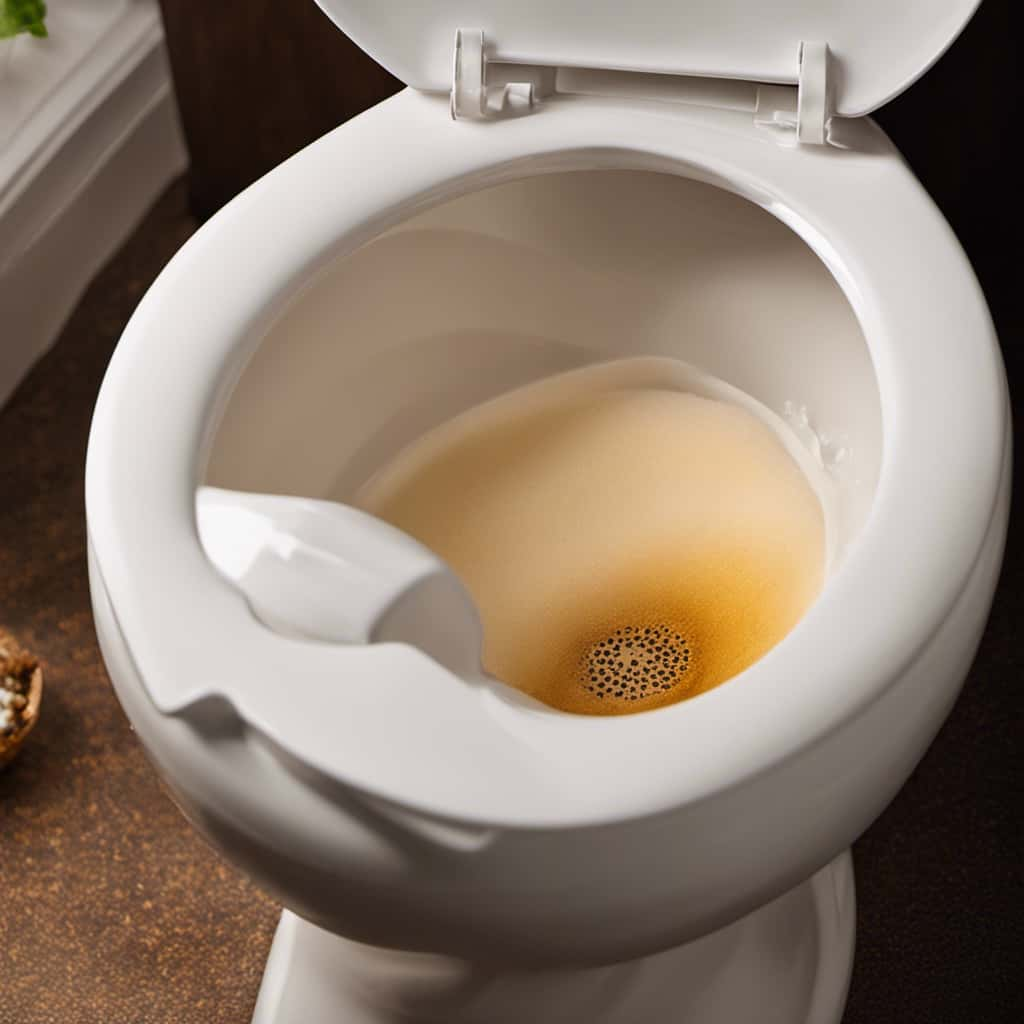
How Can Personal Preferences and Cultural Norms Influence the Decision to Close or Leave the Toilet Seat Open After Using the Bathroom?
When considering whether to close the toilet seat after using it, personal preferences and cultural norms play a significant role. Our individual choices and societal expectations shape our decision-making in this matter.
Conclusion
In conclusion, closing the toilet seat after pooping is a hygienic and considerate practice. It helps prevent the spread of germs and potential health risks associated with leaving it open.
Like closing the door to keep out unwanted guests, closing the toilet seat is a simple act of courtesy that can make a big difference in maintaining a clean and healthy bathroom environment.
So remember, just like shutting the front door to keep the cold out, close the toilet seat to keep the germs in!

With an impeccable eye for detail and a passion for bathroom-related, Ava leads our editorial team gracefully and precisely.
Under her guidance, Best Modern Toilet has flourished as the go-to resource for modern bathroom enthusiasts. In her free time, you might find Ava exploring antique shops and looking for vintage bathroom fixtures to add to her collection.
Bathtub
Which Button Do You Push on a Dual Flush Toilet

Did you know that the average person flushes the toilet approximately 2,500 times annually?
With the rise of environmentally-conscious habits, many people are turning to dual flush toilets for water conservation.
But which button should we push?
In this article, we will explore the intricacies of the dual flush system and provide you with clear instructions on when to use the big and small buttons.

Get ready to master the art of flushing efficiently and responsibly.
Key Takeaways
- Dual flush toilets offer two options for flushing: a full flush for solid waste and a half flush for liquid waste.
- The big button is used for a full flush to effectively remove solid waste from the bowl, while the small button is used for liquid waste.
- Clear size and labeling help users understand the purpose of each button, eliminating any confusion in button usage.
- Proper maintenance is crucial for the efficiency and longevity of dual flush toilets, including regular cleaning and timely repairs.
Understanding the Dual Flush System
Understanding the Dual Flush System is essential for us to effectively use a dual flush toilet. Dual flush toilets offer two options for flushing: a full flush for solid waste and a half flush for liquid waste. This system allows for water conservation, as the half flush uses significantly less water than a traditional toilet flush.
However, it’s important to note that there are pros and cons to using a dual flush toilet. On the positive side, these toilets can save water and lower utility bills. On the negative side, some users may find it confusing to determine which button to push for each type of waste. Additionally, there are common misconceptions about dual flush toilets, such as the belief that they’re difficult to maintain or prone to clogging.
Differentiating the Big and Small Buttons
To differentiate the big and small buttons on a dual flush toilet, we can easily identify them based on their size and labeling. The big button is typically larger in size and is labeled for a ‘full flush,’ while the small button is smaller and labeled for a ‘half flush.’ This labeling system helps users understand the purpose of each button and eliminates any button labeling confusion.

When to Use the Big Button
We typically use the big button on a dual flush toilet for a full flush. This button is designed to release a larger amount of water, which is necessary to effectively remove solid waste from the bowl. The table below provides a summary of when to use the big button and its associated benefits:
| Situation | When to Use the Big Button | Water Conservation Benefits |
|---|---|---|
| After a bowel movement | Always | Ensures thorough waste removal |
| When disposing of toilet paper | Always | Prevents clogging and improves hygiene |
| Cleaning the toilet bowl | Occasionally | Removes stubborn stains and bacteria |
| When performing maintenance on the toilet | Occasionally | Facilitates proper cleaning and repairs |
| When conducting a water pressure test | Occasionally | Tests the functionality of the toilet |
Using the big button when necessary not only ensures proper waste removal and hygiene but also helps conserve water. It is important to remember that proper maintenance for dual flush toilets, such as regular cleaning and timely repairs, is crucial to maintain their efficiency and longevity.
When to Use the Small Button
When using a dual flush toilet, it’s important to know when to use the small button. The small button is designed to be used for liquid waste, which requires less water to flush effectively. Here are five key reasons why it’s beneficial to use the small button:
- Water conservation benefits: By using the small button for liquid waste, you can significantly reduce water usage compared to using the big button for every flush. This helps conserve water, which is a precious resource.
- Proper maintenance of dual flush toilets: Using the small button for liquid waste helps prevent clogs and keeps the toilet in good working condition. It’s important to follow the manufacturer’s guidelines for proper maintenance.
- Efficient and effective flushing: The small button is specifically designed to provide enough water to effectively flush liquid waste without wasting excess water.
- Environmental responsibility: Choosing to use the small button demonstrates a commitment to environmental sustainability and reducing our ecological footprint.
- Cost savings: By using the small button for liquid waste, you can save on your water bill, as you’re using less water for each flush.
Additional Tips and Considerations
For optimal performance and efficiency, it is important to consider some additional tips and considerations when using a dual flush toilet. Apart from knowing which button to push, there are other factors that can enhance your experience with this water-saving fixture.

Firstly, let’s talk about the water-saving benefits of dual flush toilets. Compared to traditional toilets, dual flush toilets use significantly less water, helping to conserve this precious resource. By choosing the right dual flush toilet for your bathroom, you can maximize these water-saving benefits.
To assist you in making an informed decision, here is a table outlining some key factors to consider when selecting a dual flush toilet:
| Consideration | Description | Importance |
|---|---|---|
| Water usage | How much water does the toilet consume? | High |
| Flush power | Does it effectively remove waste? | High |
| Design and aesthetics | Does it match your bathroom decor? | Medium |
| Price | Is it within your budget? | Medium |
Frequently Asked Questions
What Is the Average Cost of a Dual Flush Toilet?
On average, the cost of a dual flush toilet ranges from $200 to $600. These toilets offer numerous benefits, including water conservation and cost savings. They have separate buttons for flushing, allowing users to choose the appropriate flush volume.
How Does a Dual Flush Toilet Help in Water Conservation?
Water efficiency benefits of a dual flush toilet include reduced water consumption and lower utility bills. It helps conserve water by offering two flush options for liquid and solid waste, minimizing environmental impact.

Are Dual Flush Toilets Compatible With All Plumbing Systems?
Dual flush toilets have installation requirements to ensure compatibility with all plumbing systems. The benefits of dual flush toilets for older plumbing systems include water conservation and reduced strain on pipes.
Can I Retrofit a Regular Toilet Into a Dual Flush Toilet?
To retrofit a regular toilet into a dual flush toilet, you will need a conversion kit. This upgrade offers the benefits of water conservation and cost savings. The process involves replacing the flush mechanism and adjusting the water usage options.
What Are Some Common Troubleshooting Tips for a Dual Flush Toilet?
Common problems with dual flush toilets include insufficient flush power, water leaks, and button malfunctions. To fix them, ensure proper water pressure, check for leaks, and clean or replace faulty buttons.
Conclusion
In conclusion, understanding the dual flush system is crucial for efficient water usage in toilets.

Differentiating between the big and small buttons is key to knowing when to use each one.
Remember, the big button is for solid waste, while the small button is for liquid waste.
By using the appropriate button, you can contribute to water conservation efforts and help protect the environment.
So, next time you’re faced with a dual flush toilet, don’t hesitate to push the right button and make a splash in water efficiency.

With an impeccable eye for detail and a passion for bathroom-related, Ava leads our editorial team gracefully and precisely.
Under her guidance, Best Modern Toilet has flourished as the go-to resource for modern bathroom enthusiasts. In her free time, you might find Ava exploring antique shops and looking for vintage bathroom fixtures to add to her collection.
Bathtub
Can You Use a Power Shower Without Electricity

Do you find it frustrating to depend on electricity for a rejuvenating power shower? Don’t worry, we have some alternative solutions that will help you stay clean and fresh without requiring a power source.
In this article, we’ll explore portable shower solutions, gravity-fed systems, solar-powered alternatives, and hand pump showers.
So, if you’re ready to master the art of staying clean even when the lights go out, let’s dive in!
Key Takeaways
- Portable shower options are practical and convenient for showering without electricity, as they are lightweight and easy to transport.
- Gravity-fed shower systems are a viable option that relies on the force of gravity for water pressure, making them simple and reliable without the need for electricity.
- Solar-powered shower solutions are an eco-friendly alternative that use solar energy to heat water efficiently and reduce reliance on electricity.
- Hand pump showers are a practical choice in remote areas or during power outages, as they require no electricity and are portable and easy to install.
Portable Shower Options
When it comes to finding a solution for showering without electricity, one option that we’ve found to be practical and convenient is using a portable shower.
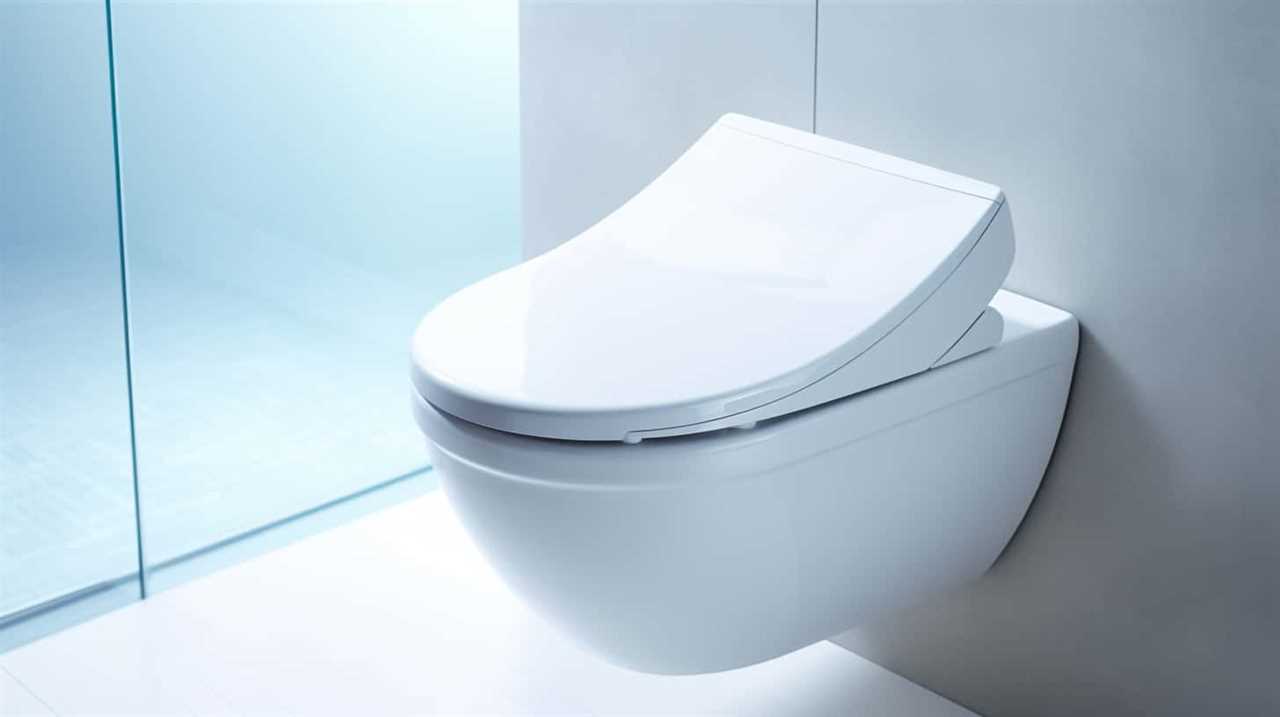
Portable showers are commonly used in camping scenarios, where access to electricity may be limited. These showers are designed to be lightweight and easy to transport, making them ideal for outdoor use. They typically consist of a water reservoir, a shower head, and a pump mechanism.
One advantage of portable showers is their water-saving feature. Many models are equipped with water-saving technology, such as adjustable flow rates and spray patterns, which help conserve water while still providing an enjoyable shower experience.
Additionally, some portable showers are designed to be solar-powered, utilizing the sun’s energy to heat the water. This further reduces the need for electricity and makes them even more eco-friendly.
Gravity-Fed Shower Systems
Although it may seem counterintuitive, using a gravity-fed shower system is a viable option for showering without electricity. Gravity-fed shower systems rely on the force of gravity to provide water pressure, making them ideal for low pressure showers or water saving solutions.

These systems work by using a water source placed at a higher elevation than the showerhead. As the water flows down, it creates enough pressure to provide a satisfying shower experience.
One advantage of gravity-fed shower systems is their simplicity and reliability. They don’t require any electricity or complex components, making them easy to install and maintain.
Additionally, these systems are environmentally friendly, as they reduce water consumption by using only the necessary amount of water for each shower.
Solar-Powered Shower Solutions
To continue our exploration of alternative showering options, let’s now delve into the realm of solar-powered shower solutions.

Solar-powered water heaters are an eco-friendly shower alternative that harnesses the power of the sun to heat water. Here are three key considerations when it comes to solar-powered shower solutions:
- Efficiency: Solar water heaters are designed to maximize the conversion of solar energy into heat, ensuring efficient water heating.
- Storage: These systems include a storage tank where heated water is stored for later use, allowing for continuous hot water availability.
- Backup Systems: Some solar-powered shower solutions come with backup systems, such as electric or gas heaters, to ensure hot water supply during cloudy days or periods of high demand.
Hand Pump Showers
We frequently rely on electricity for power showers, but hand pump showers offer an alternative solution. While electric pumps provide convenience and consistent water pressure, hand pump showers can be a practical choice in certain situations. These manual shower options are especially useful in remote areas where electricity is not readily available or during power outages.
| Hand Pump Showers | Electric Pump Showers |
|---|---|
| No electricity needed | Requires electricity |
| Portable and easy to install | Requires professional installation |
| Water pressure dependent on user’s strength | Consistent water pressure |
| Suitable for outdoor use | Suitable for indoor use |
Hand pump showers require no electricity, making them an eco-friendly choice. They are portable and can be easily installed, providing a convenient solution for camping trips or off-grid living. However, the water pressure in hand pump showers relies on the user’s strength, which may not be as consistent as electric pump showers. Ultimately, the choice between hand pump and electric pump showers depends on the specific needs and preferences of the user.
Alternative Methods for Staying Clean
There are various alternative methods we can use to stay clean without relying on a power shower. Here are some water-saving techniques and DIY shower alternatives to consider:

- Dry shampoo: A quick and easy way to freshen up your hair without using water.
- Wet wipes: Perfect for freshening up your body when you don’t have access to a shower.
- Basin wash: Fill a basin with warm water and use a washcloth or sponge to cleanse your body.
- Bucket shower: Fill a bucket with water and use a cup or small container to pour water over yourself.
- Solar shower: Utilize the sun’s heat to warm up a bag of water and hang it for a makeshift shower.
- Portable camping showers: These compact devices use a gravity-fed system and can be used anywhere.
Frequently Asked Questions
How Does a Portable Shower Differ From a Power Shower?
A portable shower differs from a power shower in terms of convenience and mobility. The portable shower offers benefits such as easy transportation and setup, while the power shower provides advantages like high water pressure and consistent temperature control.
Can a Gravity-Fed Shower System Provide Enough Water Pressure for a Satisfying Shower Experience?
Using a gravity-fed shower system, one can enjoy a satisfying shower experience without relying on electricity. However, compared to the convenience and power of a portable shower, the water pressure may be lower.
Are Solar-Powered Shower Solutions Practical for Everyday Use?
Solar-powered shower solutions are practical for everyday use. The efficiency of these showers is dependent on the amount of sunlight available. However, the initial cost of solar-powered showers can be high, making them less accessible for some individuals.
How Does a Hand Pump Shower Work and Is It Easy to Use?
A hand pump shower operates by manually pumping water to create water pressure. It is easy to use, requiring repetitive pumping, and can provide a satisfying shower experience without the need for electricity.

What Are Some Alternative Methods for Staying Clean When a Power Shower Is Not Available?
Portable showers and water saving techniques are essential when a power shower is unavailable. We’ll explore alternative methods for staying clean, ensuring you have the knowledge to master cleanliness even without electricity.
Conclusion
In conclusion, when it comes to using a power shower without electricity, there are a variety of options available. From portable showers to gravity-fed systems, solar-powered solutions, and hand pump showers, there are alternative methods for staying clean even without access to electricity.
So, whether you’re camping in the wilderness or experiencing a power outage, don’t fret, as there are ways to enjoy a refreshing shower experience that will leave you feeling rejuvenated and ready to take on the day.
As they say, when it comes to cleanliness, where there’s a will, there’s a way.

With an impeccable eye for detail and a passion for bathroom-related, Ava leads our editorial team gracefully and precisely.
Under her guidance, Best Modern Toilet has flourished as the go-to resource for modern bathroom enthusiasts. In her free time, you might find Ava exploring antique shops and looking for vintage bathroom fixtures to add to her collection.
-

 Bathroom Enhancements3 months ago
Bathroom Enhancements3 months agoWill Hot Bath Lower Blood Pressure
-

 Reviews2 months ago
Reviews2 months agoLDian Smart Toilet Review [2024]
-

 Reviews3 months ago
Reviews3 months agoKohler Innate Smart Toilet Review [2024]
-

 Bathtub1 week ago
Bathtub1 week agoAre Clorox Toilet Wand Refills Septic Safe
-

 Reviews3 months ago
Reviews3 months agoKohler NUMI 2.0 Smart Toilet Review [2024]
-

 Reviews3 months ago
Reviews3 months agoCANEST Smart Toilet Review: The Ultimate Bathroom Upgrade [2024]
-

 Toilet Types3 months ago
Toilet Types3 months agoAre Bleach Tablets Bad for Your Toilet
-

 Reviews3 months ago
Reviews3 months agoWoodbridge B0970S Smart Bidet Toilet Review [2024]





















